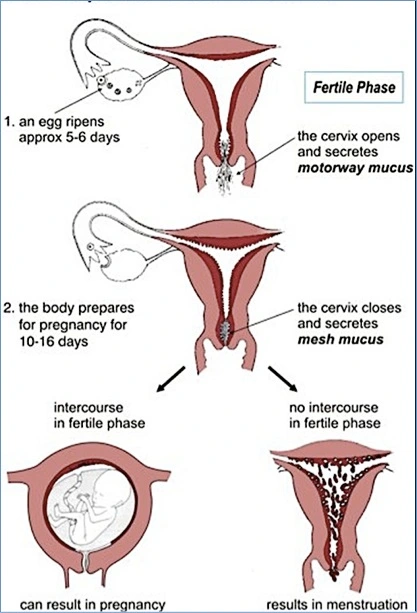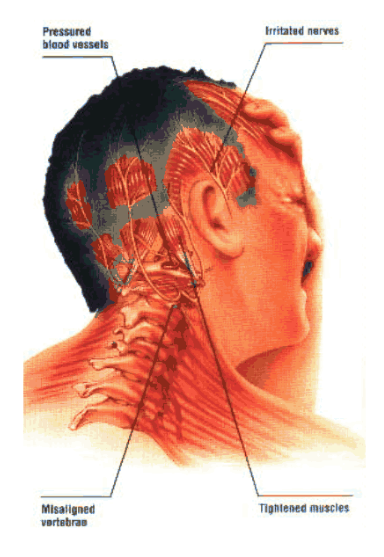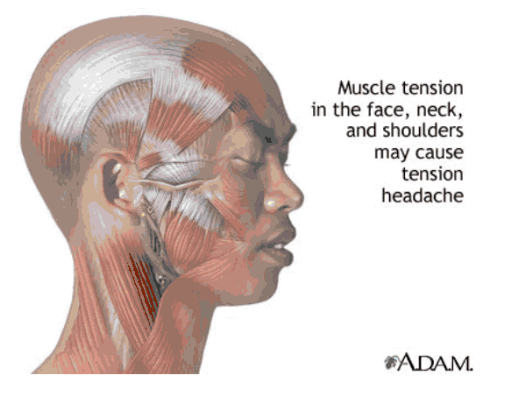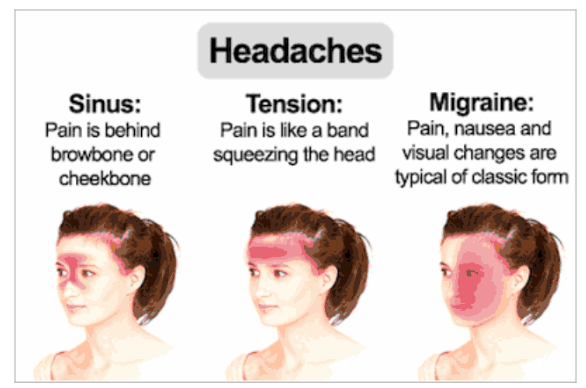ALLERGIES & HYPERSENSIVITY By Gerald Zollner’s

Introduction
This is a paper on how to manage Allergies & Hypersensitivity with the tools provided by Yoga. It’s important to note that Yoga doesn’t claim to cure any diseases, but will be of great help in managing diseases.
1. Background: The Immune System
1a. What is the immune system?
The immune system can be imagined as the military force within our bodies. It detects foreign invaders, and destroys them. It can also detect and destroy sick / infected cells, as well as cells that are going to become tumors.
As in the military, there are different task forces that handle different tasks.
1b. B-cells & T-cells
B-cells and T-cells can be imagined as moving custom agents. They constantly move through our bodies and check every cell they meet for their ‘ID’.
When they find a foreign invader, e.g. some dangerous bacteria, they go to the lymph nodes, and transform themselves into plasma, in order to produce antibodies that are designed for specifically fighting that one recognized invader.
1c. Antibodies
There are 5 different types of antibodies that can be produced to fight the invaders:
IgA
IgD
IgE
IgG
IgM
The one responsible for fighting allergies is lgE. Every immune system produces lgE, despite the body having allergies or not.
2. The Hypersensitive Immune System
In the hypersensitive immune system the B- and T-cells, the moving custom agents, identify otherwise harmless substances, such as the protein contained in peanuts, as threats to the body.
These hypersensitive B- and T-cells can be imagined like today’s airport controls. They can’t distinguish between a substance that is potentially dangerous, and a simple bottle of water, or shampoo. Many harmless substances are viewed as a potential threat, and will be destroyed.
So when those overly careful B- and T-cells categorize an otherwise harmless substance, such as peanuts, as dangerous, they go ahead and do their job, just as with real dangers.

They go to the lymph nodes to produce lgE antibodies specifically designed to fight the protein found in the peanuts. Once these specialized lgE cells are spread throughout the body, the peanut protein will be attacked and destroyed every time it enters the body.
2b. The allergic reaction
Destroying foreign cells wouldn’t actually be bad for the body, if the whole operation was a ‘clean strike’. However, with every lgE attack, there are ‘casualties’. During the attack a substance called Histamine is spread. This substance is responsible for the allergic reaction.
Depending on where, and how much Histamine is released, the reactions can range from a little itching, to a fatal anaphylactic shock. Most commonly these symptoms can be found:
– Itching (body, eyes, nose) – Hives - Sneezing - Wheezing
– Nausea - Diarrhea - Vomiting - Cross Reactivity
2c. Different kinds of allergies
Allergic reactions can occur in several parts of the body:
Respiratory System
Certain substances inhaled through the mouth or nose can cause allergic reactions in the respiratory System. Common allergens are: pollens, dust, and animal dander, amongst others.
Digestive System
Food can cause allergic reactions in the digestive system. The most common allergies include peanuts, shellfish and milk.

Skin
People can be allergic to plants, dyes, metal, and several chemicals contained in deodorants and other cleaning products.
Injection
Of injected allergens, penicillin and insect venom are the most common offenders.
2d. Causes
So what gets the B- and T-cells to be so sensitive?
Scientists are not exactly sure. Research has found that the chance of being hypersensitive is higher when one of the parents is allergic to something. The chances are even higher when both parents are allergic, and 70% of twins get the same allergic reaction as their twin, so genetics definitely play a role.
Studies have also shown that environmental factors play a role. People living in urban areas are more likely to develop allergies than people living in rural areas.
Another theory is that the immune system is more likely to misidentify a harmless substance as a threat when it’s weak, so right after a sickness for example.
And yet another theory is that not enough exposure to alien substances causes a higher chance to develop allergies. E.g. people growing up with a cat have a lower chance of developing an allergy to cat hair. People growing up in very clean homes have a higher chance to develop dust allergies.
3. Conventional treatments
A list of treatments used in western medicine.
3a. Avoidance
This one is very simple and effective: If you’re allergic to peanuts, don’t eat peanuts. This treatment does however not work for substances that can hardly be avoided, like pollen or dust.
3b. Medication
There are a variety of drugs for handling allergies. None of them work at the root of the cause though, the hypersensitive B- and T-cells. They commonly just prevent/reduce the production of histamine or lgE.
3c. Immune Therapy
This treatment takes a long time, and isn’t working for every allergy. The patient gets injected with small amounts of the allergens, and slowly over time the amount gets increased. The body ‘gets used’ to the substance, and realizes it’s actually not dangerous.
4. Treatment with Yoga
4a. Calm down the mind and the body will follow
There is a tight interaction between the body and the mind. For example, if the mind gets scared, reasonable fear or unreasonable makes no difference, the breathing gets elevated, adrenalin is released, etc. On the other hand, when a person has a very calm mind, e.g. during meditation, the breath gets so slow, the whole body relaxes.
– Utilizing this body-mind connection to calm down the body (including the B- and T-cells), and therefore mind, will be one part of this program.
– The other part will use yogic techniques (Asanas. Pranayama, Kriyas) to clean and strengthen the areas where allergic reactions might occur, so namely the respiratory system and the digestive system.
– And yet another important part of the program will be raising the student’s awareness.
5. The Program
5a. Building awareness
For many allergic people the most effective way to manage their allergies, is to stay away from the
allergens. Yoga can help greatly with that by building up awareness. An aware person is much less likely to ‘accidently’ eat peanuts, buy a deodorant that the person is allergic to, or leave the house without knowing if pollens are currently active.
The awareness can also help in narrowing down what exactly someone is allergic to. Some people might recognize that they often feel bad after eating, but haven’t found out yet what they’re allergic to.
Eating with awareness can greatly help with that, even more so if the student agrees on a regular diet.
5b. Diet
Regulating someone’s eating habits can greatly help with increasing someone’s awareness towards food.
Most people eat too much and rest too little. Reduce your food intake to three times a day, and eat at the same times every day, if possible. Initially, one should stick to one diet as the basis for one’s lifestyle. Eat similar meals every day. Then, when you make changes to your diet, you can observe the effect easily. Changes might range from almost no noticeable difference, increased or reduced energy level, up to an allergic reaction.
Also, after each meal, take either a short walk, or sit in Vajrasana for 3-10 minutes. Ideally do both. This will greatly improve your digestion. Regular bowel movement will reduce the effects of stress that are usually caused by constipation or diarrhea.
5c. Meditation
Meditation is probably the most effective tool for relaxing and calming the mind. Initially, it’s very difficult to sit in a meditation posture and let go of all thoughts, but there a few techniques that can be mastered by most beginners.
Breath Observation
Just, whenever you have time, but preferably in a quite silent environment, start observing your breath. Concentrate on the tempo of your breathing, the depth, the raising and falling of your belly. Don’t try to control it, just observe. Whenever you get distracted, make a mental note. For example ‘distracted by a thought’, distracted by sound’, etc. This way one will get a good overview of how aware one is.

Walking Meditation
Another very nice way to raise awareness in everyday life is to synchronize the breath with the walking. Take four steps for your inhale, and four steps for your exhale. You can mentally chant Om 1, Om 2, Om 3, Om 4, for the inhale, and then the same for the exhale.
So Hum
A technique used even by advanced practitioners, but also accessible to beginners. Just sit comfortably (a chair is fine if you can’t sit on the floor), and mentally chant ‘So’ on your inhale, and ‘Hum’ on your exhale. Sooooooooo. Hummmmmmm. Sooooooo. Hummmmmmm. This can also be practiced in combination (before) the watching of the breath.
Full Yogic Breath
Another excellent tool for calming down the mind. The student makes full use oh his lungs: abdomen area, chest area and cervical area are all utilized for the inhaling and exhaling. Naturally the breath gets long and slow. A slow breath will calm down the mind tremendously.
5d. Yogic Attitude
Yama and Niyama are a set of rules laid out in Patanjali’s Yoga Sutras. Following those rules as good as possible can completely change one’s view at life. Out of the 10 Yamas and Niyamas, Contenment, Self-discipline and self-study will be most beneficial for an allergic person. It is, however, not very easy to just go and follow these rules. The Hatha Yoga Pradipika therefore recommends to keep the Yamas and Niyamas in mind, but not stress about them too much.
5e. Kriyas
Jala Neti
For people whose allergic reactions manifest in the respiratory system,Jala Neti can be a great help. Jala Neti will help the student keeping his nose clean. That way he’ll be able to breath through his nose most of the day, and avoid inhaling any allergens such as dust and pollen directly into his lungs, without passing through the filtering hairs of the nostrils.

Sutra Neti
A little bit more challenging than Jala Neti, but even more effective for keeping one’s nose clean. In Sutra Neti, a short catheter is inserted into one nostril until it reaches the back of the throat. One can then catch the catheter with two fingers, and release it halfway through the mouth. In that position, one end remaining outside the nostril, one end coming out from the mouth, the catheter can be moved back and forth to free the nose from any excessive mucus, dust, etc.
Vamana Dhouti
Vamana Dhouti can be a very helpful tool for people with food allergies. The swallowed salt water completely cleans the stomach, food pipe and throat from all excessive mucus, toxins etc. It also works strongly on the mind, as the student experiences a very intense feeling of cleanliness after vomiting out the salt water.
5f. Asanas

Asanas are great for managing allergies and hypersensitivity in many ways:
– The synchronization of breathing and movement will raise one’s awareness, and increase one’s lung capacity. Greater lung capacity means stronger respiratory system.
– By squeezing and stretching the tissue, one can increase the blood flow towards certain areas in the body. Toxins can be washed away; more oxygen and glucose are distributed to those regions. This way the health of the regions involved in the allergic reactions (respiratory system, digestive system) can be directly strengthened.
– Forward bends have a calming effect on one’s mind, as the attention is turned inward. Following the concept of the tight body-mind interaction, one would hope that calming down the mind will also calm down the body(including the hypersensitive B- and T-cells).
– Backbends open up the lung and increase one’s lung capacity, and therefore strength of the respiratory system.
– Inversions give great relieve to the respiratory system. The final postures are not easily accessible for everyone, but there are easier versions.
– Relaxation: some Asanas allow the student to deeply relax, without loosing the awareness. Perfect for our cause.
Most beginners won*t be able to perform the full Asanas taught in traditional schools. Therefore two programs were created, one for beginners, and one for intermediate students. Both programs demand about 20 min to continue, leaving about 10 min for doing Pranayama. With the help of an experienced Yoga teacher a beginner can gradually move from the beginner’s program to the intermediate program.
Beginner Asana program
Ankle Stretching Breathing 10x
Sides Stretching 15x
Spinal Twist Breathing 15x
Tadasana (against the wall) 5 breath
Uttanasana 10 breath
Adho Mukha Svanasana 5 breath
Adho Mukha Virasana 15 breath
Vagra Swasa Breathing 15x
Bhujangasana Breathing 5 x + 5 breath holding
Dhanurasana Breathing 5x chest only, 5x legs only, 5 breath holding
Shashankasana 15 breath
Pavanamuktasana Kriya breathing 5x left leg + 5x right leg + 5 breath holding both legs
Jataraparivartanasana 5 breath each side
Urdva Prasaritapadasana Breathing 5x left & 5x right & 5 breath holding each side
Vipareeta Karani 3 x 20 sek
Sarvasana 5 min
Intermediate Asana program
Surya Namaskara 3 to 6 rounds
Hasta Padanghustasana 5 breath
Hasta Padadasana 5 Breath
Adho Mukha Svanasana 5 breath
Adho Mukha Virasana 15 breath
Sirsasana 18 breath
Shashankashana 15 breath
Bhujangasana 5 breath
Dhanurasana 5 breath
Pashimottanasana 18 breath
Ardha Matsyendrasana 5 breath each side
Sarvangasana 15 breath
Sarvasana 3 -5 min
5g. Pranayama
Pranayama can be used for both creating heat in the body, as well as cooling down the body (& mind). In the case of allergies and hypersensitivity, we want to calm down the mind/body, therefore we’ll use cooling pranayama techniques:
Shitali or shitkari 10-15 rounds(3-5 min)
Bramari 10 rounds (3 min)

Kapalbhati and Bastrika
Both these techniques are beautiful tools for cleansing the nose and lungs. The forceful exhalation helps releasing toxins and excessive mucus from the respiratory system.
Opposite to Shitali and Shitkari these Pranayama techniques create heat, so one has to be careful to not make the immune system even more sensitive than it already is. It has to be decided case by case if these techniques should be utilized. They are very good for people that are sensitive to the cold.
The program can be finished with a short meditation (see chapter 5c.Meditation for techniques).
Sources
Aananada Yoga Indea Teacher Training Manual Aananada Yoga Indea Teacher Training Level 2 Manual Hatha Yoga Pradipika Yogic
Management of Asthma & Diabetes http://en.m.wikipedia.org/wiki/Allergieshttp://science.howstuffworks.com/life/human-biology/allergy.htmhttp://edition.cnn.com/2013/03/26/health/what-causes-allergies/http://www.acaai.org/allergist/allergies/what-causes-allergies/Pages/def…http://www.m.webmd.com/allergies/guide/chronic-allergies-causes
Pictures:
http://www.musee-afrappier.qc.ca/images/site/large/zoom-animation-immune…http://www.viamedic.com/health-articles/files/media/image/allergies4.jpghttp://jeanetteshealthyliving.com/wp-content/uploads/blogger/_cUenbvuVQ1w/TTRGdzNHeiI/AAAAAAAAAoc/HmT2Ozc5Ue0/s1600/Food Allergies.jpg
http://upload.wikimedia.org/wikipedia/commons/thumb/7/7d/Lahiri_Mahasaya…Lahiri_Mahasaya.jpg http://www.syctchennai.com/wp-content/uploads/2012/05/Jala-Neti.gifhttp://yoganandam.files.wordpress.com/2010/04/sarvangasana.jpghttp://www.preksha.com/images/editorimages/sheetali.gif
DISCLAIMER:
The information and views in these reports/studies do not reflect the
official opinion of YogaIndia. Neither YogaIndia and bodies nor any
person acting on their behalf may be held responsible for the use
which may be made of the information contained therein. YogaIndia
assumes no responsibility for errors or omissions in these reports and
does not guarantee the accuracy or completeness of information, text,
graphics, links, or other elements contained in the provided reports.
YogaIndia will not be held responsible for any loss, damage or
inconvenience caused as a result of any inaccuracy or error contained
in these reports. YogaIndia disclaims any responsibility for content
errors, omissions, or copyright infringement and disclaims any
responsibility associated with relying on the information. All
information contents stated in these reports belong to the original
authors, and Yoga india does not claim any ownership.




















